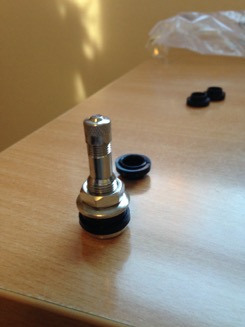As a chemistry problem, keeping beer carbonated is a pretty easy issue to solve — pressurize the beer with a gas that won’t oxidize or interact with whatever is in the growler. Getting that done is a little tricky. Custom valves, gauges, fixtures, hoses, containers, and questions like: “What pressure?” and “Where can I get an easily available and affordable source for CO2?” come to mind.
A few kickstarted projects came and went that promised customs caps and other setups to keep growlers fresh, but the best I can tell they were undone by liability insurance on the way to market. They do exist, or did at one time, but you can’t buy them for whatever reason. A few products have made it market, but seem overwrought. One of the most interesting is the “GrowlerTap” — but after using it, the solution seemed unwieldy. It basically turns a growler into a keg with a dispenser. Maybe I wasn’t smart enough to use the thing properly, but I couldn’t keep from over pressurizing (FOAM!!) the growler. Your results may vary.
Keeping it Simple
There is the start of a pretty cool solution over at instructables.com: Just use the existing growler setup and modify the metal cap with a custom bike valve. Use a step drill to put a hole in the cap and assemble a custom valve stem with a food-grade rubber seal — replacing the existing seal packaged with the stem.
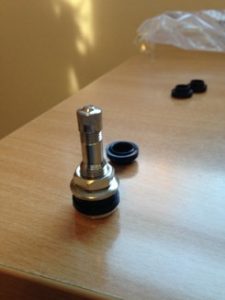
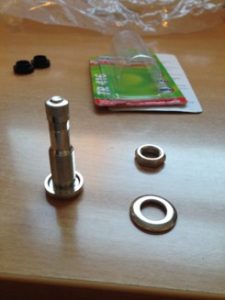
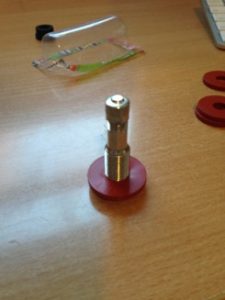
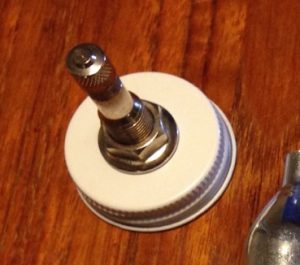
Assemble the valve and food-grade seal into the cap and you’re done — all you need after that is a CO2 source and a way to regulate the pressure. (And some rough idea of what psi the beer needs to be kept carbonated.)
I asked one of the owners of the local microbrewery at what pressure beer needs to be kept — his answer was “just under 10 psi; nothing over that.” (I immediately wanted to find a time machine and warn my 19-year-old self; saved a boatload of bad keg experiences.)
Making it Work
Without going overboard with custom hoses and regulators, a pretty common solution on the Web was to use a hand-held bike tire inflator to pressurize the growler. Pretty cheap and the canisters use CO2. I thought about rigging some sort of high-end bike inflator and monitor the pressure as I pressurized the beer but opted for a cheap tire gauge. You have to get a feel for what pressure you’re applying. I usually end up going over a bit and just checking the pressure until I get it down to 10psi. You can also leave the cap loose and “purge” the air out first, and then tighten it and bring it up to pressure.
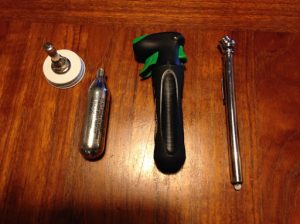 |
| The Setup |
It’s a bit of a cave-man solution: There are NO safety factors here, nothing to release extreme pressure if you get carried away. With the right “expertise” or beer googles I’d imagine someone could blow up a growler, end up in the ER, or worse.
But there it is — it’s worked pretty well thus far.

